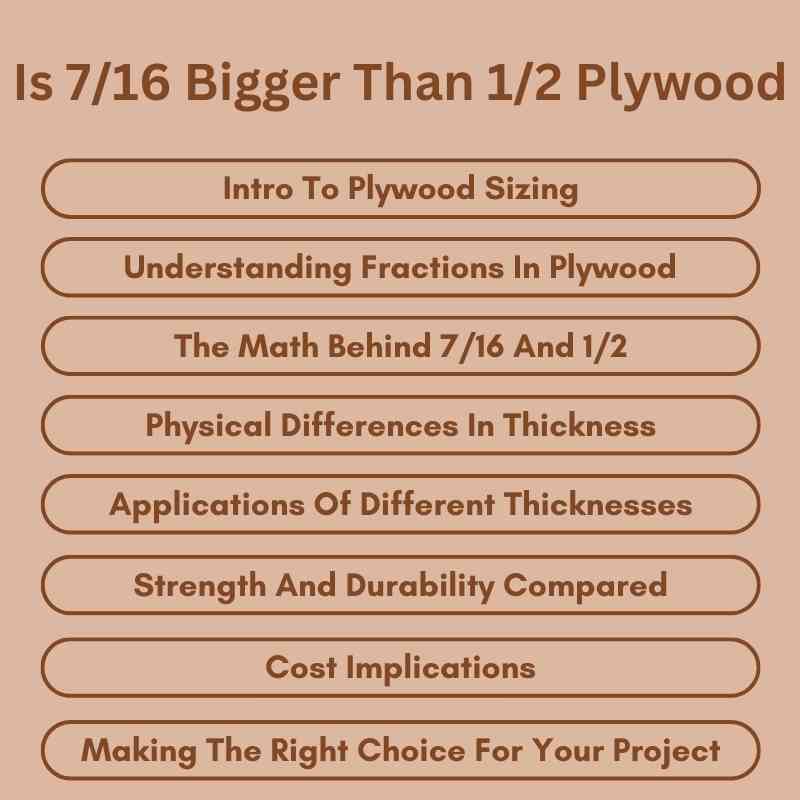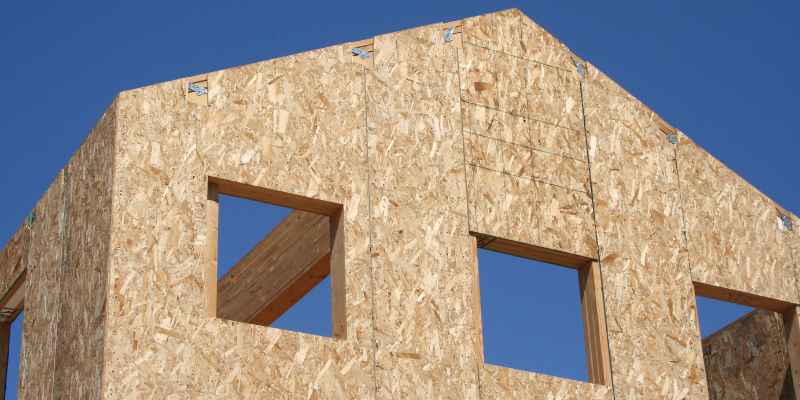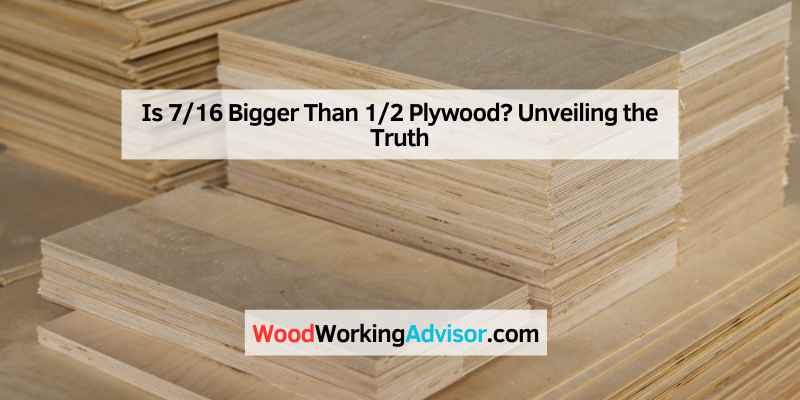Yes, 7/16 is larger than 1/2 plywood. To compare, convert 1/2 to a fraction with a common denominator.
Plywood thickness is crucial for various construction and DIY projects. Understanding the differences between thicknesses helps ensure you choose the right material for your needs. Common thicknesses include 1/4 inch, 1/2 inch, and 3/4 inch, but many also use fractions like 7/16 inch.
This can lead to confusion, especially when determining which size best fits your project. Choosing the right thickness impacts structural integrity, weight, and overall appearance. A well-informed choice can save time and resources in the long run. Knowing how 7/16 compares to 1/2 inch can help you make the best decision for your plywood needs.
Intro To Plywood Sizing
Plywood comes in different thicknesses. Common sizes include 1/2 inch and 7/16 inch. These measurements can be confusing for many. It’s important to know that 7/16 inch is slightly thinner than 1/2 inch.
Some people think 7/16 inch is bigger. This is a misconception. 1/2 inch equals 8/16 inch. So, 8/16 inch is greater than 7/16 inch. Understanding these sizes helps in selecting the right plywood for your project.

Understanding Fractions In Plywood
Understanding fractions helps in comparing plywood sizes. The fractions 7/16 and 1/2 represent parts of a whole. To compare them, convert both to a common denominator.
The common denominator for 16 and 2 is 16. The fraction 1/2 can be converted to 8/16. Now, compare 7/16 and 8/16.
Since 7/16 is less than 8/16, 1/2 is bigger than 7/16. This shows that 1/2 plywood is larger than 7/16 plywood.
The Math Behind 7/16 And 1/2
To compare 7/16 and 1/2, converting them to decimals can help. 7/16 equals 0.4375. On the other hand, 1/2 is 0.5. This shows that 1/2 is larger than 7/16.
Here’s a quick comparison:
| Fraction | Decimal |
|---|---|
| 7/16 | 0.4375 |
| 1/2 | 0.5 |
The difference between 1/2 and 7/16 is about 0.0625. This means 1/2 is greater. Understanding these values helps in making better decisions.
Physical Differences In Thickness
The thickness of plywood can vary slightly. 7/16 inch plywood is thicker than 1/2 inch plywood. Plywood thickness is often measured in inches. Builders need to know these small differences.
Even slight variations can affect a project. A thicker plywood board can support more weight. It can also change how a project fits together. Accurate measurements are essential for good results.
| Measurement | Thickness (inches) |
|---|---|
| 7/16 Plywood | 0.4375 |
| 1/2 Plywood | 0.5000 |
Applications Of Different Thicknesses
Using 7/16 plywood is ideal for roof sheathing and walls. It provides good strength and is lighter than thicker options. This thickness works well for areas needing some flexibility.
1/2 plywood is often used for subfloors and furniture. It offers extra strength and durability. Choose this thickness for projects requiring more support.
Strength And Durability Compared
7/16 plywood is thicker than 1/2 plywood. This affects strength and durability.
The structural implications of using 7/16 plywood include better support. It can handle more weight.
Longevity is another key factor. Thicker plywood lasts longer in various conditions.
Wear resistance improves with increased thickness. It can withstand moisture and heavy usage.
| Type of Plywood | Thickness | Strength | Durability |
|---|---|---|---|
| 1/2 Plywood | 0.5 inches | Moderate | Average |
| 7/16 Plywood | 0.4375 inches | Higher | Better |
Cost Implications
The price per square foot for 7/16 plywood can vary. Generally, it is lower than 1/2 plywood. This difference can affect overall costs.
For a project, consider the total area needed. The larger the area, the more the cost difference matters. Here is a simple comparison:
| Type of Plywood | Price per Square Foot |
|---|---|
| 7/16 Plywood | $X.XX |
| 1/2 Plywood | $Y.YY |
Overall project costs depend on the total quantity needed. Always calculate to see which option fits your budget.
Making The Right Choice For Your Project
Choosing the right plywood is important for your project. Thickness affects strength and durability. 7/16 inch plywood is thicker than 1/2 inch plywood, making it more robust.
Consider the following factors:
- Weight: Thicker plywood is heavier.
- Cost: Higher thickness usually means higher prices.
- Application: Use thicker plywood for structural support.
- Flexibility: Thinner plywood bends more easily.
Expert recommendations suggest choosing based on your specific needs. For heavy loads, 7/16 inch is preferred. For lighter projects, 1/2 inch may suffice.

Frequently Asked Questions
Is 7/16 Plywood Thicker Than 1/2 Inch Plywood?
Yes, 7/16-inch plywood is actually thinner than 1/2-inch plywood. The difference is 1/16 of an inch. This small measurement can impact your project, especially if you need precise fitting or structural integrity.
How Does 7/16 Compare To 1/2 Inch In Projects?
When choosing between 7/16 and 1/2 inch plywood, consider the application. Thicker plywood generally offers more strength and durability. However, 7/16 may be suitable for lighter applications like sheathing or indoor projects.
What Are Common Uses For 7/16 Plywood?
7/16 plywood is often used for sheathing in walls and roofs. It’s also popular for subflooring and other lightweight applications. Its moderate thickness makes it versatile for many construction projects.
Can 7/16 Plywood Replace 1/2 Inch Plywood?
While you can use 7/16 plywood in some cases, it’s not always a direct replacement. The strength and load-bearing capacity differ. Always assess your project requirements before making a substitution.
Conclusion
Understanding the difference between 7/16 and 1/2 plywood is essential for your projects. While 7/16 is slightly smaller than 1/2, choosing the right thickness impacts strength and durability. Always consider your specific needs before making a decision. This knowledge will help ensure you select the best plywood for your projects.

